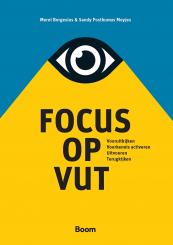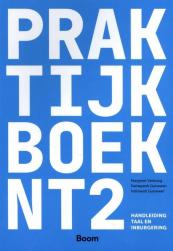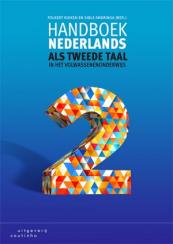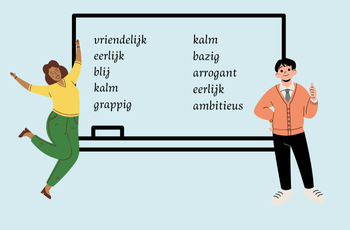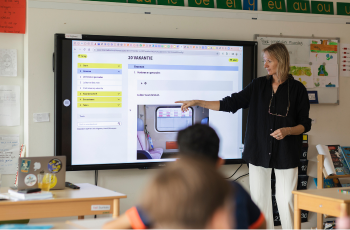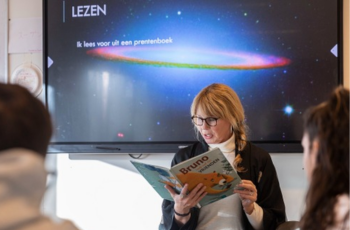Teaching effectively with the VUT model
What is the VUT model?
The VUT model is not a new model. But despite the fact that the model gets a lot of attention and you come across it in all didactics literature, many teachers appear to struggle with it in practice. “I have to do it, but it doesn't get anything done,” ‘I find it boring,’ ‘I don't have time for it,’ ‘I think it's really important, but it just doesn't get done,’ are comments you frequently hear when talking about the VUT model. The V phase and the T phase are skipped in many classes.
And that's a shame, because by looking ahead to the learning goals and tasks, by activating prior knowledge and by looking back after execution at what has been learned and at the approach, a valuable cycle is created that reinforces intentional learning in the student. Moreover, the VUT model gives you as a teacher a foothold in designing your lessons. Before you know it, it will be a component you and your students won't want to miss. This is because the VUT model does not stand alongside the lesson content; looking ahead and looking back become an integral part of the lesson content with this approach.
What does the VUT model provide?
There are multiple models and strategies for an effective lesson. Why should you consider the VUT model? Every teacher wants his or her students to learn a lot and get as far as possible in achieving their learning goals. By consistently applying the VUT model, you create a teaching climate in which students become autonomous learners. You encourage autonomous learning by repeatedly invoking an active and reflective learning attitude.
When you apply the VUT model well, trainees gain insight into their own learning process and where they stand and what they need. Especially with students who like to put the control in the hands of the teacher, applying the VUT model contributes to independent learning. Especially the cyclical construction of the lessons, the inclusion and expansion of previous knowledge, looking back at what worked and what didn't is very important. This gives students the opportunity to take full ownership of their learning process.
The V phase: looking ahead and activating prior knowledge (Vooruitkijken)
In the V phase you look ahead and activate prior knowledge. In this phase you pay attention to what is to come, with the goal of making people curious about what is to come. You ask questions such as: What are the lesson objectives? What is the program? What does the student want to learn? What knowledge can you tap into? Looking ahead stimulates the imagination and gets the thinking process going. In addition, this phase provides both students and teachers with structure. In fact, looking ahead is essential in preparation for performing a task. It helps to think about the content and approach of the lessons.
In addition to looking ahead, activating prior knowledge is an important goal of this phase. Activating prior knowledge is a good learning technique. As a teacher, you want your students to activate as many concepts and knowledge about the topic in their minds as possible. The relevant knowledge (linguistic, but also, for example, from experience) that they already have should light up. Gerjanne Dirksen in Breindidactiek explains the importance of prior knowledge as follows: “Learning and memorization often begin with attention. The more focused attention the brain gives to an experience the better we process and remember the experience. Anything you give attention to grows in the brain.' *2
Looking to see if goals have been met? Then the goals must be known
The T phase: looking back
The other phase we highlight in this article is the final phase of the VUT model: the T phase. It is the phase of deliberately looking back at the lesson (or part of the lesson) together with the student. The great advantage of this phase is that both the teacher and the student gain more insight into the learning results, the approach or the (new) learning wishes. Moreover, in this phase you check whether the learning objectives have been met. It is important to also make time in the T phase for repeating the lessons. Repetition is necessary for learning, it ensures that the material sticks better.
V & T: inseparable
Moreover, looking back is reflecting on behavior and the future. What do you need to do to do better? What do you still need to learn? Looking back cannot be done without looking ahead. Looking to see if goals have been met? Then the goals must be known. And so you see, the word “VUT model” may sound quite static, but in practice it is a dynamic, cyclical process that trainee and teacher go through together constantly. The output of one phase, is the input for the next phase.
Let's get Started!
Want to get started with the VUT model? We'll give you a little preview of Focus on VUT.
- It is important to start with the theory. Immerse yourself in the model, its structure and background. When you know what makes the model successful, it sticks better, and it becomes easier to integrate the model into your teaching. After all, you will know what to look for. Would you like to read more about it? You can do so with the book Focus on VUT, which explores all the theory in depth.
- Sometimes it is difficult to find the time or focus to think about a good beginning or end of your lesson. It may also be that you do not know how to generate a good yield from the V and T phase; then such a phase is not motivating for you as a teacher nor for the student. Therefore, the second tip is: use teaching methods! In the book Focus on VUT you will find no less than 85 teaching methods that you can apply. With these you can turn the V- and T-phase into a sparkling and informative part of your lesson. Are you curious about these methods? We are giving away two of them here; one for the V-phase and one for the T-phase:
- For optimal integration in your lesson, it is important to reflect well yourself. You taught a lesson, some parts went well, others went less well. You received feedback from your students. What do you do then? How do you use this information to make your lessons even better? This phase is actually the second T phase, your own T phase. It is sometimes difficult to reflect. It takes time, which is not always available. Still, it is good to make time for this. Try to see self-reflection not as yet another task you have to perform, but as a gift to yourself. By reflecting, you are investing in your teaching skills. You challenge yourself to do things better or differently and, as a result, you keep enjoying your work. It is not easy to look at yourself critically and to receive feedback. After all, teaching is vulnerable work, and we all want to do it well. Want to know more about how to go about it? You'll find practical tips for this T-stage in Focus on Early Retirement as well.
Sources:
1. Ellis, 2003: in Focus op VUT, 2022
2. Breindidactiek, 2018: p. 67, in: Focus op VUT, p. 23

